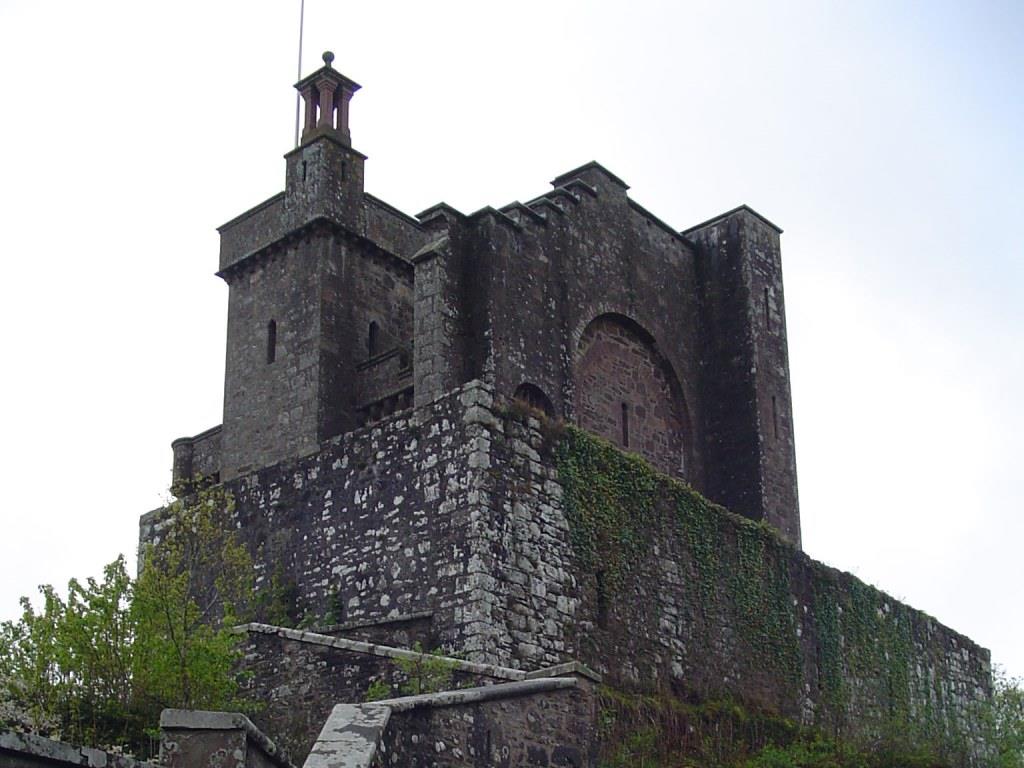Drummond Castle

Drummond Castle Details
Drummond Castle, a C15 tower of the Drummonds and C17 gatehouse with later mansion and spectacular gardens.
- Closest To: Crieff, Auchterarder
- Access: Occasional Access
- Grid Reference: NN844180
Drummond Castle is a large ruined tower house and courtyard, as well as a later mansion. Both of these occupy a narrow ridge between two streams in the upper reaches of Strathearn. The mansion remains occupied, and the gardens are open to the public for a fee.
The traditions of the Drummond family put to paper in the 19th century claim that among the early grants to the family was the position of thane of Lennox, which reflects the misunderstanding of the nature of that role, but there is no documentary evidence to sustain this prior to the reign of Alexander III, when the traditional link to Lennox is confirmed. At the end of the 13th century, Gilbert of Drummond signed the Ragman Roll, and he had a brother, Malcolm, on record at the same time. These two men may be the brothers of John de Drummond, whose heiress daughters are mentioned in the early 14th century, and is a witness to a document assessed as being between 1208 and 1265. All three seem likely to be sons of Malcolm Beg, son of Gillespie Galbraith, who appears as a witness to a Lennox document assessed as between 1208 and 1214. Gillespie is the nepos of earl Ailin (II) of Lennox, who died in 1217. This could mean nephew or grandson. The Drummonds are therefore probably an offshoot of the old mormaers, and therefore earls, of Lennox. Earl Malcolm (I) was a supporter of Robert Bruce, and after Bannockburn the family were granted a number of estates in Perthshire, including the future site of Drummond Castle.
In 1490, Sir John Drummond, who had been made the first Lord Drummond in 1471, had acquired the lands of Concraig from his distant relative Sir Maurice Drummond, and received a grant from King James IV to erect a castle on these lands. This castle was undoubtedly the impressive great tower forming the core of the medieval buildings. This was extended in the 16th century and the complex was redesigned with the addition of a gatehouse and lower courtyard area in the early 17th century. The castle was attacked and damaged by Cromwell’s men mid century, leaving the castle uninhabitable by the constant Royalist Drummonds. In 1689 a new house was started by the 4th Earl of Perth, a title the Drummonds had been ennobled to in 1605. The 4th earl was a confidant of King James VII & II, and was actually created Duke of Perth after King James abdicated, and the castle was occupied by government troops in 1715 and slighted afterwards. In 1746 the Jacobite John Drummond (claiming the title 4th Duke pf Perth) was forfeited. In 1785 James Drummond, a descendant of the 3rd earl of Perth was allowed to gain entry to the Drummond estates, and in 1822 repair works started, which included the great tower from 1840.
Photograph courtesy of and copyright of Ray Biggs
Official Drummond Castle website
Become a supporter of my work to access a more detailed history